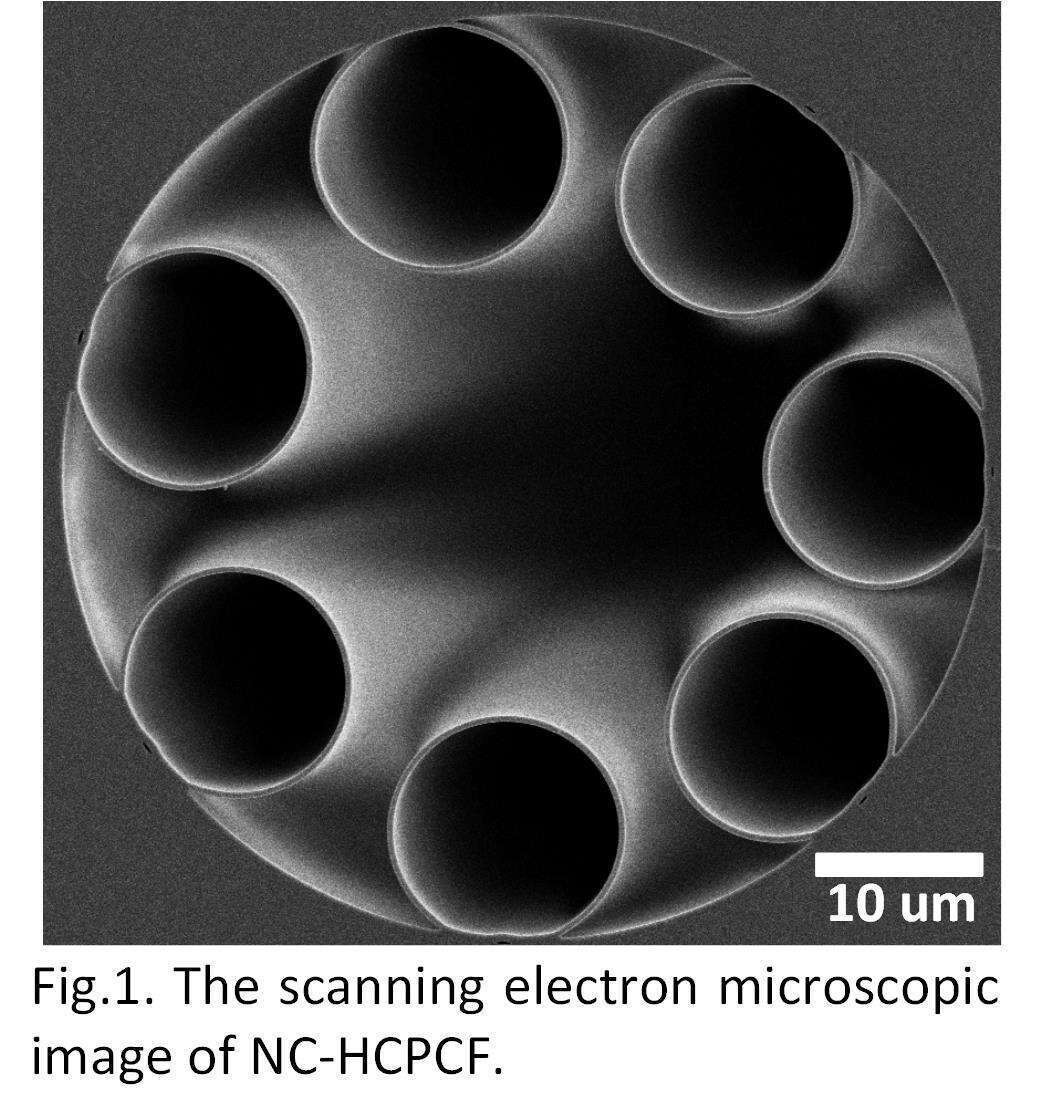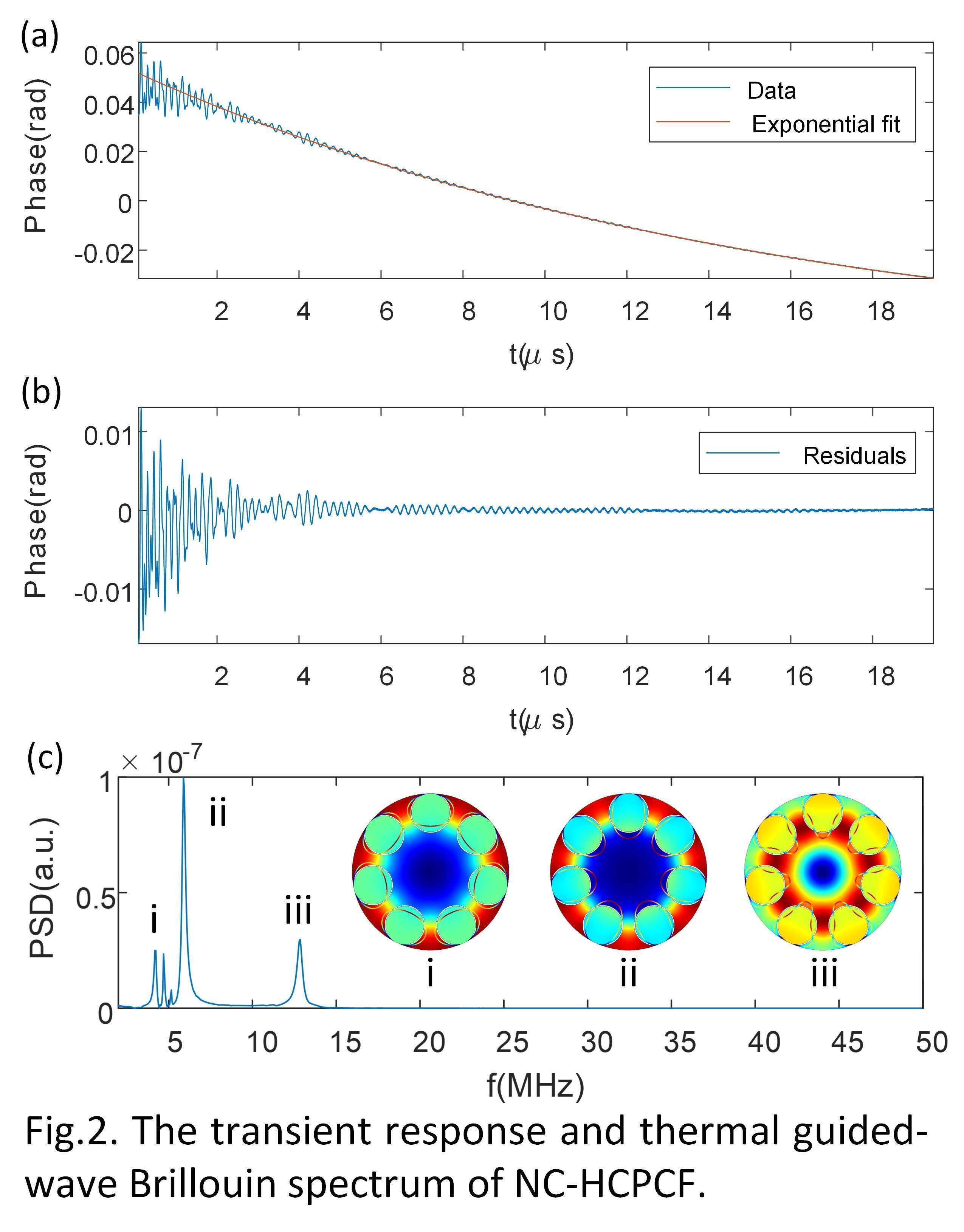
Thermal Stimulated Guided-wave Brillouin Scattering
2Institute of Laser Engineering, Beijing University of Technology
3Photonic Sensors Research Laboratory, Shenzhen Research Institute, The Hong Kong Polytechnic University
We investigate the thermal guided-wave Brillouin scattering in a gas-filled negative-curvature hollow-core fiber. Resonances below 15 megahertz are observed with a maximum gain of about 2.8 W-1m-1cm.
Optical absorption is typically accompanied by fluid dynamic processes, categorized as photothermal (PT) effect and photoacoustic (PA) effect. These processes are widely used in imaging and chemical analysis. However, in hollow-core fibers, little is known about them (or other optoacoustic interactions). Recently, several works have studied them in terms of PT effect [1], guided-wave Brillouin scattering [2-4], and long-live refractive index changes [5] in HC-PCFs.
In this work, we investigate the optoacoustic interaction in terms of thermal guided-wave Brillouin scattering in a gas-filled negative-curvature hollow-core fiber (NC-HCPCF). Thermal stimulated backward Brillouin scattering is a common phenomenon in absorbing gas [6]. As we show in Fig. 1, the fiber in the experiment consists of seven thin-walled capillaries surrounding an air core in the center and is filled with 100 parts per million acetylene balanced nitrogen. In transient response, as we show in Fig. 2(a) and (b), PT signal changes relatively slow compared with guided-wave Brillouin signal and can be regarded as a smoothing background with exponential decay. By using a Mach-Zehnder interferometer, the first-order and second-order radial Brillouin active air-modes are observed with a maximum gain of about 2.8 W-1m-1cm. Furthermore, these air-modes are coupling to the mechanical modes of the capillary and results in several new resonances near radial air-modes as we show in Fig. 2(c).


This phenomenon gives us a better understanding of the laser-induced fluid dynamics in hollow-core fiber. It could be used to develop a new paradigm of photoacoustic spectroscopy and will also be important for fiber-based ultrafast molecular spectroscopy.
Reference
- Lin, Y., Jin, W., Yang, F., Ma, J., Wang, C., Ho, H. L., & Liu, Y. (2016). Pulsed photothermal interferometry for spectroscopic gas detection with hollow-core optical fibre. Scientific reports, 6, 39410.
- née Zhong, W. E., Stiller, B., Elser, D., Heim, B., Marquardt, C., & Leuchs, G. (2015). Depolarized guided acoustic wave Brillouin scattering in hollow-core photonic crystal fibers. Optics express, 23(21), 27707-27714.
- Renninger, W. H., Shin, H., Behunin, R. O., Kharel, P., Kittlaus, E. A., & Rakich, P. T. (2016). Forward Brillouin scattering in hollow-core photonic bandgap fibers. New Journal of Physics, 18(2), 025008.
- Renninger, W. H., Behunin, R. O., & Rakich, P. T. (2016). Guided-wave Brillouin scattering in air. Optica, 3(12), 1316-1319.
- Koehler, J. R., Köttig, F., Trabold, B. M., Tani, F., & Russell, P. S. J. (2018). Long-Lived Refractive-Index Changes Induced by Femtosecond Ionization in Gas-Filled Single-Ring Photonic-Crystal Fibers. Physical Review Applied, 10(6), 064020.
- Boyd, R. W. (2003). Nonlinear optics. Elsevier.
andriy.zhao@connect.polyu.hk

Powered by Eventact EMS